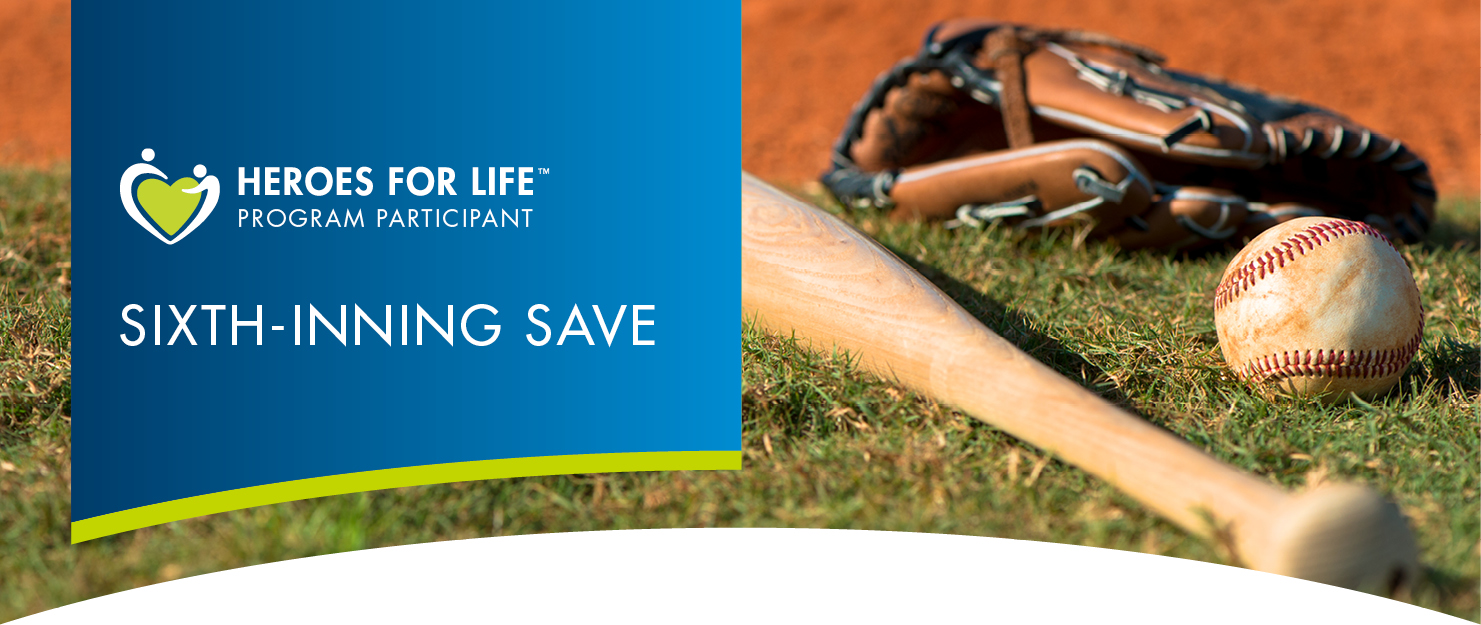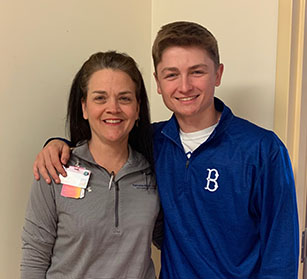
A fateful fly ball
It was the bottom of the sixth inning on a sunny spring day in March. Grayson Selepes, a centerfielder for Byrnes High School, and his teammates were trying to hold onto a one-run lead against Bishop England in their last game of the Sandlapper Shootout at Gilbert High School in Gilbert, S.C. The batter hit a ball into the outfield and Grayson and the shortstop both put their gloves high in the air to catch it. That’s the last thing Grayson remembers.

T.J. found Grayson unresponsive, making sounds as if he was trying to catch his breath. “I was thinking it was a spinal injury. I didn’t think it was cardiac arrest,” she recalls. Then nothing — no pulse, no motor response — he had gone limp. “I didn’t think anything I did was going to help,” T.J. says.
She immediately began CPR and was joined by two parents, nurses who’d heard the page for medical assistance. “Grayson’s eyes were rolling back in his head and he was gasping for air. It looked like he was having a seizure — his lips were blue,” says Ashley. Grayson’s mom, one of the coaches, and a nurse held hands and prayed next to Grayson while the rescuers performed CPR.
An unexpected rescue
One of the coaches yelled for someone to call 911 and get the automated external defibrillator (AED). That morning T.J. had wheeled a small wagon containing resuscitation equipment, an AED, and first aid supplies onto the field behind first base. As always, she placed the lime green ZOLL® AED Plus® in full view on top. As a result, coaches were able to get T.J. the AED in under a minute. Though she’d never used one, she had no trouble following the voice prompts to attach the electrodes to Grayson. She waited while the AED analyzed Grayson’s heart.
It advised a shock, so T.J. followed the commands and administered it. The AED instructed rescuers to continue CPR, giving feedback to press harder to improve compression quality. The AED advised that they were giving good compressions and to continue.
After two more rounds of CPR, Grayson gasped and began breathing shallowly. His eyes blinked. Emergency personnel were on scene by then and they transported him to Prisma Health in Columbia, S.C.
Back in the game
When Grayson awoke in the hospital, he asked his mom, “Did we lose? Did one of us catch the ball?” The last thing he remembered was reaching for the ball — he had no idea how he ended up in the hospital.
“This experience really made it hit home about how important it is to know how to use the AED and how to perform CPR.”
— Ashley Selepes
He was released two days later. After a month of monitoring, he was cleared of any restrictions. The doctors believe it was an incident of commotio cordis, sudden cardiac arrest (SCA) due to a blunt blow to the chest. Unfortunately, commotio cordis has become more common in athletes in recent years. It can be caused by any sort of blow to the chest, from an object such as a baseball or hockey puck or from a collision with another player, as in Grayson’s case. “This experience really made it hit home about how important it is to know how to use the AED and how to perform CPR,” Ashley says. “If we didn’t have those three (rescuers) and that AED, things wouldn’t have turned out the way they did.”
Grayson is back playing baseball just three months after his SCA. “I was glad that they had that AED out there. I was very lucky that T.J. had that training. God put them all there for a reason that day,” he says.
